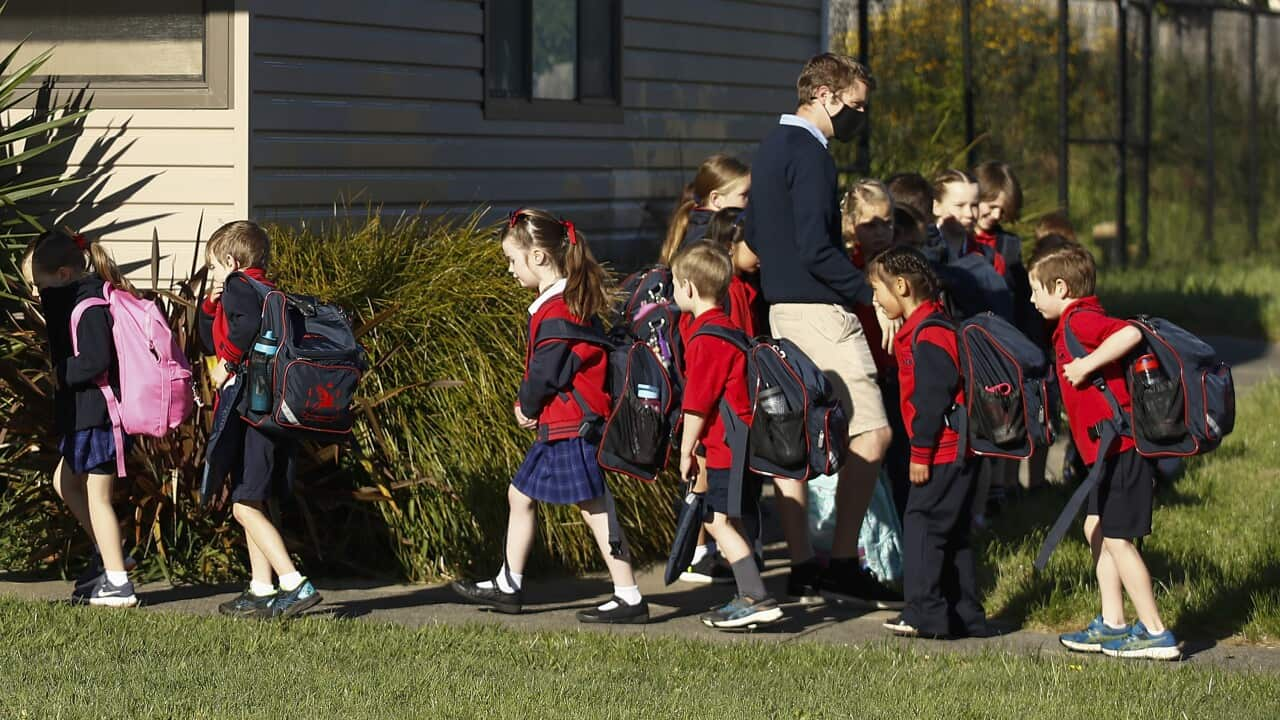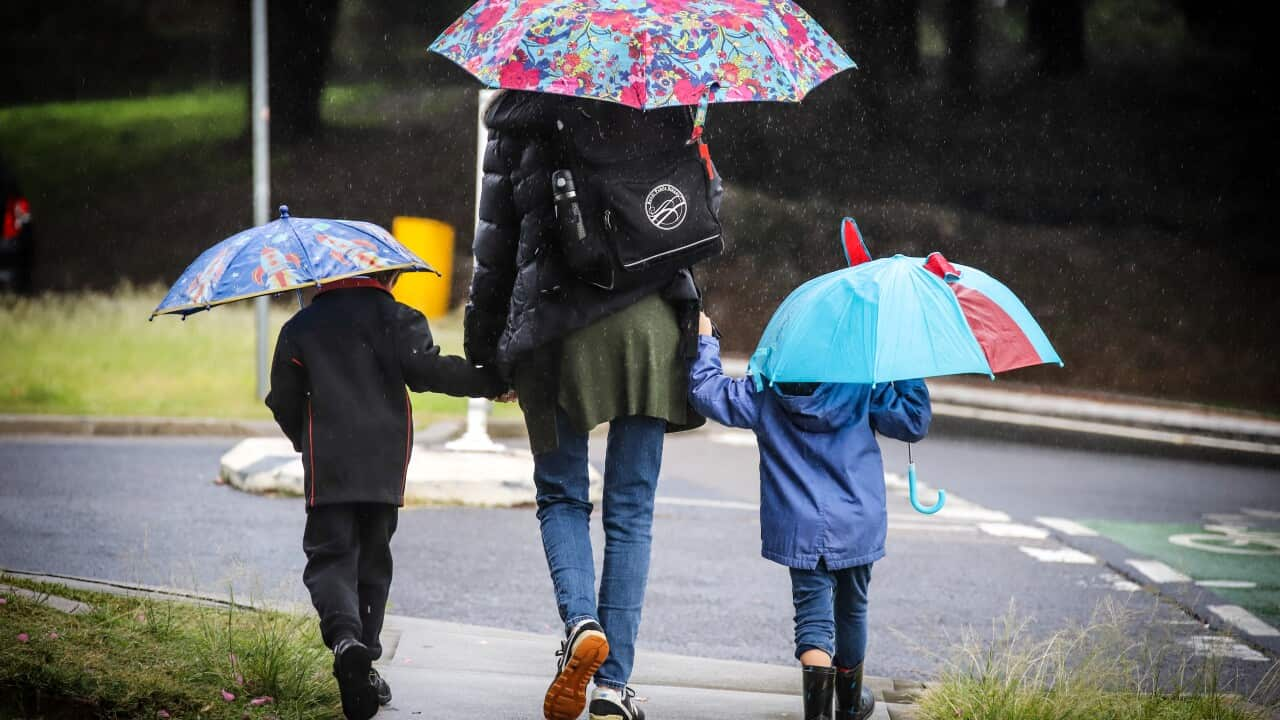Every Monday at Yirara College, just outside of Alice Springs, students become the teachers.
They teach both academic and administrative staff their many languages.
Yirara is among the 10 Australian schools that have recorded the biggest growth in the percentage of students from non-English speaking homes.
Australian Curriculum, Assessment and Reporting Authority (ACARA) data suggests the school went from having 14 per cent of students from non-English speaking backgrounds in 2008 to 100 per cent in 2022.

Yirara College in the Northern Territory is one of the schools in Australia that have recorded the greatest growth in the percentage of non-English speaking students according to data from between 2008 and 2022. Source: Supplied / Yirara College
However, he said the make-up of the school had likely not changed as drastically as the ACARA data suggested.
To get a national picture of how the make-up of Australian classrooms has changed, SBS News reviewed schools that had more than 200 students enrolled — but behind the data, something else was revealed.
What does the data say?
Between 2008 to 2022 (the latest data set available), the 10 schools that reported the greatest percentage increase in students from a non-English speaking background are in NSW, Western Australia, Victoria and the Northern Territory.
One of the 10 schools was Al-Taqwa College in Victoria, an independent Islamic school with a sister campus in Indonesia.
In 2008, Al-Taqwa College reported that 23 per cent of its students came from a non-English speaking background, which spiked to 99 per cent by 2022.

Credit: SBS News
Derby District High School in Western Australia reported that 5 per cent of its student population came from a non-English speaking background in 2008. That figure shot up to 86 per cent when the data was recorded again in 2022, representing an 81 percentage point increase.
The school reported that 85 per cent of its students identified as Indigenous in 2022.
Principal Eliot Money told SBS News: "In previous years, parents did not enrol their children as Aboriginal or Indigenous for a multitude of reasons, and therefore, the data is skewed in those early 2000s."

Credit: SBS News
In 2009, when he came to the school as a deputy principal, Money said there were a "significant number of errors in enrolment" particularly when it came to the cultural selections available in the enrolment system.
"Since 2012, there have been increased opportunities to select more detailed labels of cultural heritage in our enrolment system," Money said.
"Many of our townspeople were recorded as 'Australian' rather than as 'Indigenous' or 'Aboriginal.'"
He cited this as a potential reason for such a significant jump in the recorded percentage of students from non-English backgrounds.
It's a similar story in Halls Creek.

Credit: SBS News
"Yirara is an incredibly unique context, without being too bold, it's the only one of its kind in the country. We're I guess the United Nations of Aboriginal nations in Australia," he said.
"We have probably 19 different language groups in the school, and at any one time, probably 12 to 13 languages are present on campus, at any one time and for all those students English is sometimes a fourth language."

Yirara Principal Wes Meurant says the school has always catered for a majority of non-English speaking students. Source: Supplied / Yirara College
Coming from a linguistics background Meurant already spoke three languages other than English and has been learning Arrernte since moving to the NT last year.
“I do enjoy my languages, but I've never enjoyed it so much as learning my first Australian language, to be honest,” he said.
Meurant said it was important his students saw that he was learning.
“I need to show the kids because I'm expecting them to come in and learn English, and that's really tough, because learning a new language changes the way you think as well, so it really changes how you relate to the world around you.
“English is a big step for a lot of young people and I need to be able to empathise with them and the only way I can do that is really honestly learning a language here and I chose a language that's Indigenous to the land here.”
Multicultural versus culturally diverse
Megan Watkins, a professor in the School of Education at Western Sydney University, says it's important to be clear on terminology when discussing the changing face of Australia's classrooms.
"While people kind of use the term multicultural just to mean cultural diversity, we make a distinction between the two," she told SBS News.
"The reason why we do that is because multiculturalism actually refers to a set of policies that refer to all Australians.
"So they're not people who are non-Anglos or non-Australian citizens, they refer to everybody."

Credit: SBS News
"What they're actually referring to is kids who are probably non-Anglo," she said.
Reflections of a changing Australia
The waves of migration post-World War Two, at the end of the White Australia policy in 1973, and after the Vietnam War made "incredible changes" to the Australian population, Watkins said.
That has meant changes in how previous policies addressed multiculturalism to the more complex understanding used now.
"Early policies on multiculturalism tended to focus on distinct ethnic communities … and with that went a kind of understanding of culture being something that was discrete and distinct," Watkins said.

Some Yirara College students speak up to four Indigenous languages. Source: Supplied / Yirara College
"While people's cultural heritage may be significant to them, it is not the only thing that characterises their identity or their culture for that matter," she said.
"Culture is something that not just relates to ethnicity, either how it's currently realised or as a result of ancestry, but you bring into play things like gender, you bring in social class, religion, age, sexuality, all those things combined."

Credit: SBS News
It's an ongoing struggle.
"Those centralised notions of culture are so entrenched that lots of teachers can't move away from them and find it very difficult," Watkins said.

Credit: SBS News
"It's like, 'Let's have a multicultural day, let's have everybody dress up in traditional dress and have traditional food,' and then they don’t critically engage with issues around things like racism and notions of culture that can more accurately reflect what becomes important for kids in relation to their life generally, but in particular their education," she said.











